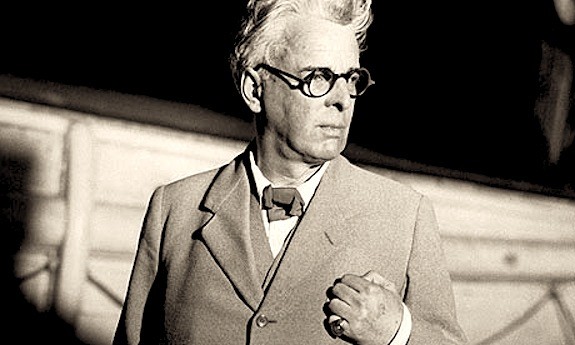Study on Yeats to expand domestically

William Butler Yeats, the Irish poet who won the Nobel Prize in Literature in 1923, was born on June 13, 1865, in the seaside village of Sandymount in County Dublin, Ireland. The 150th anniversary of his birth is being marked this year with hundreds of events and celebrations around the world.
This year marks the 150th anniversary of the birth of Nobel Prize-winning poet William Butler Yeats (1865-1939). A year-long celebration will be carried out in his hometown in Sligo, Ireland, while more than 40 countries will commemorate the pillar of the “Irish Renaissance” with a range of concerts, readings, talks and screenings.
Translations by distinguished Chinese writer Mao Dun (1896-1981) gave Chinese readers their first taste of the renowned Irish poet’s work in 1919.
Though Yeats considered himself the “last romanticist,” his works display a mix of romanticism, aestheticism, symbolism and Oriental flavors that make it hard to examine his works with any typical trend of thought in literature and art, scholars say.
Fu Hao, a research fellow at the Institute of Foreign Literature under the Chinese Academy of Social Sciences, said that Yeats’ early work, in particular his love poems, takes one’s breath away with subtle emotion and artistic form.
However, Fu said, his works began to show a kind of non-typical and private symbolism after Yeats became fascinated by the occult.
Pu Durong, an associate professor from the Irish Literature Research Centre, Shanghai Normal University, said that Yeats had a life-long interest in mysticism, spiritualism, occultism and astrology. He not only learned symbolic devices from Percy Bysshe Shelley (1792-1822) and William Blake (1757-1827) but also developed a symbolism to mediate between the demands of art and life.
“The philosophy conveyed through his early and late poetry sometimes contains elements from Indian, Egyptian, Japanese, Mesopotamian and Chinese culture,” Fu said.
Pu said the complexity of Yeats’ literary creation is rooted in traditional Irish culture, especially Celtic myth and folklore, as well as his mastery of ancient Irish music and politics.
After Yeats won the Nobel Prize in Literature in 1932, more of his work was translated into Chinese, further familiarizing Chinese people with his literary style and use of symbolism, said He Ning, a professor of foreign language at Nanjing University.
Pu said some Chinese scholars, such as Mao Dun, regarded Yeats as a representative of the Irish literature for the oppressed and the weak, so they looked for “moving” moments in his work while scholars such as Zheng Zhenduo (1898-1958) upheld life study, which is quite different from Yeats’ romanticism and occultism.
In a sense, Yeats has had a limited impact on Chinese literary circles, which also proves the peculiar charm of his work. In other words, it is hard to copy his creations, but we can be touched by them, Pu said.
However, his work continues to flourish in China, Pu said, “Wang Tongzhao, the first analogue of Yeats in China, felt an aspiration for national rejuvenation and a world filled with love and beauty in his poems.”
The study of Yeats mainly concentrates on poetry, symbolism, modernity and occultism, He said, though these theoretical explorations began in the 1930s, real development did not take place until the 1980s.
Also, the emphasis shifted from reviewing his work to studying his thoughts, he said.
Pu said academics have been negligent of Yeats’ other work, such as plays and literary theories, while there are few, if any, critiques of his novels.
“The volumes of letters Yeats wrote need to be put to good use. Research on Yeats and the translation of his work cannot be separated,” Fu said, “Individual researchers examine Yeats’ views on and application of Eastern culture from their respective cultural backgrounds, which all serve as effective means to further expand the research on Yeats.”

 PRINT
PRINT CLOSE
CLOSE